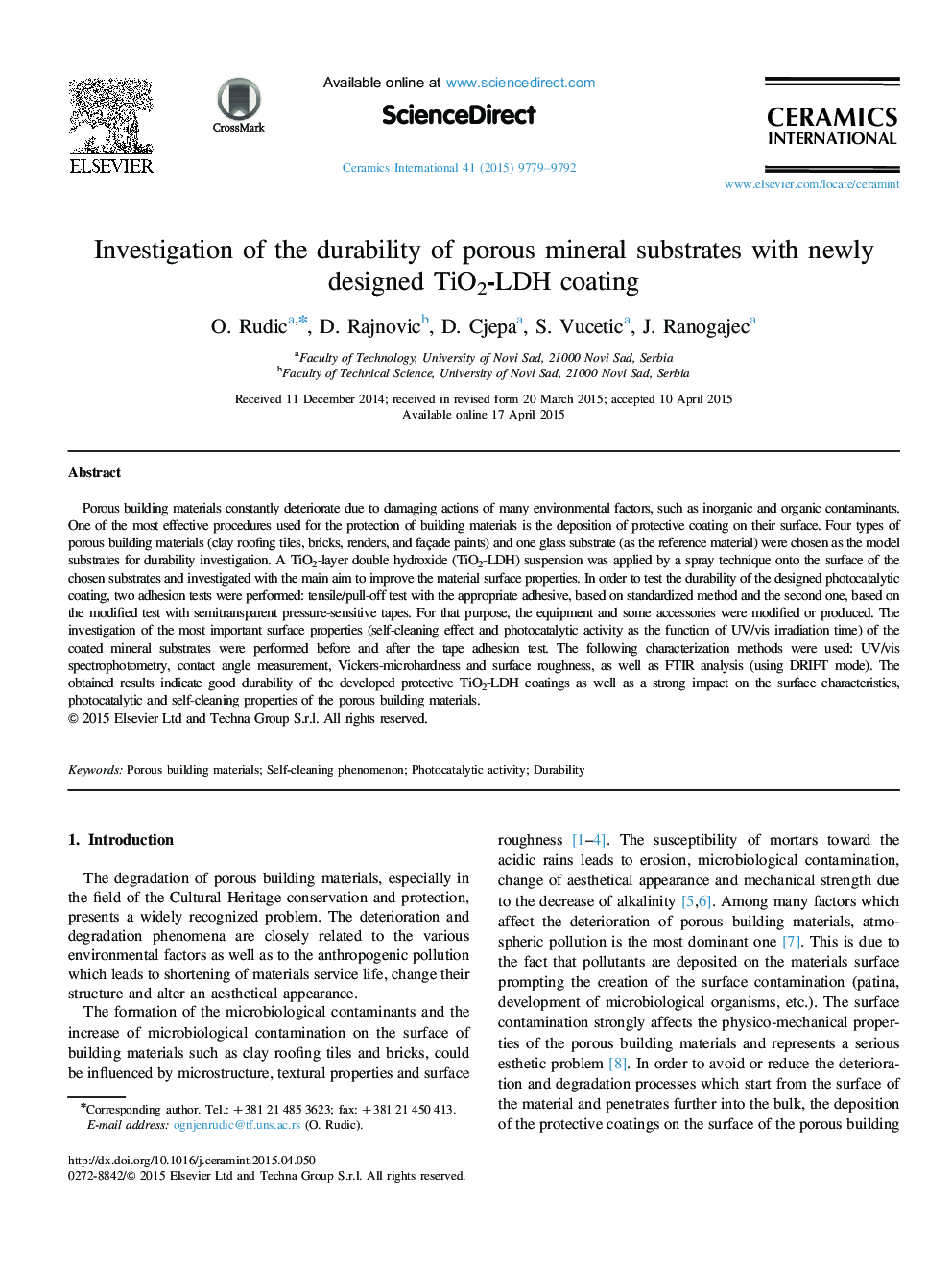| Article ID | Journal | Published Year | Pages | File Type |
|---|---|---|---|---|
| 1460265 | Ceramics International | 2015 | 14 Pages |
Porous building materials constantly deteriorate due to damaging actions of many environmental factors, such as inorganic and organic contaminants. One of the most effective procedures used for the protection of building materials is the deposition of protective coating on their surface. Four types of porous building materials (clay roofing tiles, bricks, renders, and façade paints) and one glass substrate (as the reference material) were chosen as the model substrates for durability investigation. A TiO2-layer double hydroxide (TiO2-LDH) suspension was applied by a spray technique onto the surface of the chosen substrates and investigated with the main aim to improve the material surface properties. In order to test the durability of the designed photocatalytic coating, two adhesion tests were performed: tensile/pull-off test with the appropriate adhesive, based on standardized method and the second one, based on the modified test with semitransparent pressure-sensitive tapes. For that purpose, the equipment and some accessories were modified or produced. The investigation of the most important surface properties (self-cleaning effect and photocatalytic activity as the function of UV/vis irradiation time) of the coated mineral substrates were performed before and after the tape adhesion test. The following characterization methods were used: UV/vis spectrophotometry, contact angle measurement, Vickers-microhardness and surface roughness, as well as FTIR analysis (using DRIFT mode). The obtained results indicate good durability of the developed protective TiO2-LDH coatings as well as a strong impact on the surface characteristics, photocatalytic and self-cleaning properties of the porous building materials.
